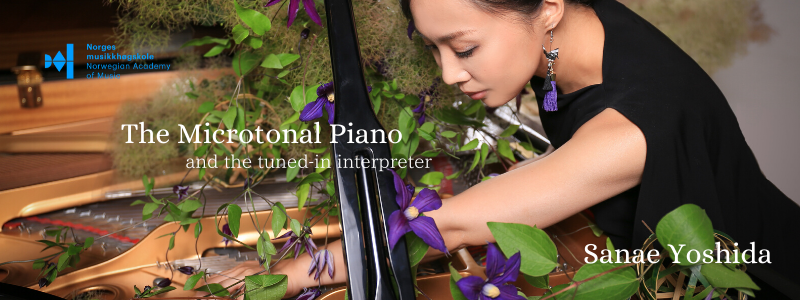Piano Harmonics
A piano flageolet with no more than one clearly audible pitch. Many of the nodes on the strings produce microtonal harmonics. Among the lower partials, the 7th, 11th and 13th partials are the ones deviating the most from the 12-TET.
www.pianoharmonics.com
Piano Multiphonics
On the piano, I define a “multiphonic”, as a flageolet sound where there is more than one clearly audible harmonic. A multi-harmonic, so to speak. Multiphonics on the piano are in most cases clearly microtonal sounds, because they combine middle/high range harmonics, which in the context of a weak fundamental, sound ‘out-of-tune’ with one another. In addition to this, they might deviate even more from harmonic tuning, due to the stiffness in the piano.
I define a string multiphonic as a single excitation by which two or more harmonics sound distinctly and simultaneously on a touched string. I use the term ‘harmonics’ here rather than ‘partials’ because it fits my understanding of how multiphonics are perceived. It seems that the ear organises the components into groups of harmonics: for example, a multiphonic with partials 3, 5, 6, 8, 10, 12, 13, 15 can be reduced to [3, 5, 8, 13] since 6 (2 x 3) and 12 (4 x 3) are octave multiples of the 3rd harmonic, 15 (5 x 3) is the 5th overtone of the 3rd harmonic/3rd overtone of the 5th harmonic, and 10 (2 x 5) is the octave multiple of the 5th harmonic. When I use ‘partial’ in this text, I am referring to individual partials separately from their harmonic relations.
Fallowfield, E. (2020). CELLO MULTIPHONICS: TECHNICAL AND MUSICAL PARAMETERS. Tempo, 74(291), 51-69. doi:10.1017/S0040298219000974
Multiphonics are groups of harmonics produced between the standard harmonic nodes on the string such that several harmonics are heard simultaneously. They are produced between harmonic nodes, for example, midway between the nodes of the octave harmonic and the 3rd harmonic. Several multiphonics can be found at almost the same spot; by only a small change of finger placement, the overtones heard are altered. It is easier to find multiphonics closer to the centre of the string, between the second and third harmonic nodes. The higher up (or down) the string you go, the smaller the space between each harmonic node gets, and the multiphonics get softer and more difficult to find.
Einarsdóttir, G. (2020). MULTIPHONICS ON THE HARP: INITIAL OBSERVATIONS. Tempo,74(291), 71-75. doi:10.1017/S0040298219000986
A large number of apps that are designed to illustrate various phe-nomena in the areas of microtonality, pitch systems and rhythmic the-ory are available on my website. The app Piano Multiphonic Calculator is based on the fraction windowing algorithm and calculates multiphonics on piano strings in which two given partials of the fundamental are present. These two partials are entered as integers; the app then calculates where on the string the multiphonic containing both these partials as its highest partials is located. Running the fraction windowing algorithm backwards calculates all of the natural harmonics (including all corresponding nodes), yielding a series of nodes of partials that approach the location of the two given highest partials. These are the exact harmonics that can potentially sound as components of the multiphonic. Two such multiphonics can be entered into the calculator simultaneously (One and Two; coloured red and blue in the calculator), which makes it possible to investigate interferences between multiphonics. This is a useful practical tool for composers and performers when working with these multiphonics. A video comparing the multiphonic simulation of the app with real multiphonics and showing how to operate the app can be found here: haps./ /vimeo.com/ 359735538
Walter, C. (2020). MULTIPHONICS ON VIBRATING STRINGS. Tempo, 74(291), 7-23. doi:10.1017/S0040298219000950
By carefully positioning the bow and a lightly touching finger on the string, the string spectrum can be conditioned to provide narrow bands of pronounced energy. This leaves the impression of multiple complex tones with the normal (Helmholtz) fundamental as the lowest pitch.
Thelin, H. (2011). Multiphonics on the double bass. Norwegian Academy of Music/The Norwegian artistic research catalogue, 2.

